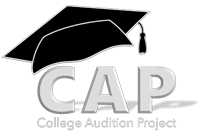Stepping onto the stage for an audition can be nerve-wracking.
Your voice is your instrument, and it needs to be in top shape.
Vocal warm-ups are crucial for actors, especially those preparing for musical theater auditions. They help prevent strain, improve performance, and ensure your voice is ready to impress.
In this article, we’ll explore various vocal warm-ups and techniques that every actor should know. Whether you’re a seasoned professional or a budding talent, these tips will help you deliver a standout performance.
The Importance of Vocal Warm-Ups
Vocal warm-ups are not just a routine. They are a vital part of an actor’s preparation.
These exercises help to prevent vocal strain and injury. They ensure your voice is flexible and ready to perform.
Moreover, warm-ups can improve your performance during auditions. They help you hit the right notes and deliver lines with clarity.
Remember, a well-prepared voice is more likely to impress casting directors. So, never underestimate the power of a good warm-up.
Breathing: The Foundation of Vocal Warm-Ups
Breathing exercises form the base of vocal warm-ups. They help to control your voice and maintain its strength.
Deep, diaphragmatic breathing is a key technique. It allows for better control over your vocal cords.
Practicing slow, controlled breaths can also reduce tension. This helps to create a more relaxed and natural sound.
Remember, mastering your breath is the first step to a successful vocal performance.
Lip Trills: Relaxing the Vocal Cords
Lip trills are a great way to relax your vocal cords. They involve blowing air through your lips to create a trilling sound.
This exercise helps to release tension in the lips, jaw, and tongue. It also promotes better breath control.
Incorporate lip trills into your warm-up routine for a relaxed and tension-free performance.
Humming: Gently Activating Your Voice
Humming is a gentle way to activate your voice. It’s a simple exercise that can be done anywhere, anytime.
By humming, you warm up your vocal cords without straining them. This helps to prepare your voice for more complex exercises.
Include humming in your routine to ensure a smooth and strain-free vocal performance.
Sirening: Exploring Your Vocal Range
Sirening is a vocal exercise that involves gliding from the bottom to the top of your vocal range. It’s like a siren, hence the name.
This exercise helps you explore and understand your vocal range. It also aids in improving your pitch control.
Incorporate sirening into your warm-up routine to enhance your vocal flexibility and range.
Tongue Twisters: Sharpening Articulation
Tongue twisters are not just fun, they’re also great for vocal warm-ups. They help improve your articulation and diction.
Choose a few tongue twisters and say them out loud as part of your routine. This will help you articulate words clearly during your performance.
Remember, the goal is not speed, but clear and precise pronunciation.
Jaw Relaxation: Easing Tension for Clearer Sound
Tension in the jaw can affect your vocal quality. It’s important to include jaw relaxation exercises in your warm-up routine.
Try gently massaging your jaw muscles. Open and close your mouth slowly, feeling the muscles relax.
This will help you produce a clearer, more resonant sound during your performance.
The Role of a Vocal Coach in Perfecting Warm-Ups
A vocal coach can provide personalized guidance. They can help you refine your warm-up routine to suit your unique voice.
They can also provide professional feedback. This can help you improve your technique and performance.
Consider investing in a vocal coach to maximize your vocal potential.

